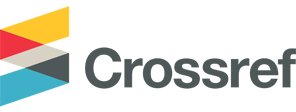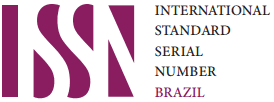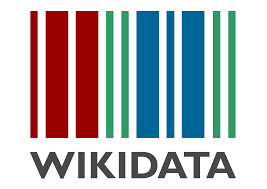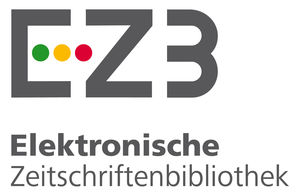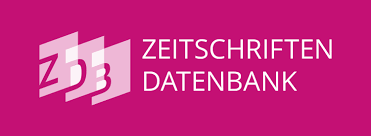Algumas potencialidades didáticas do “setor trigonal” na interface entre história e ensino de Matemática <br> Some didactic potential of “trigonal sector” at the interface between history and mathematic teaching
Palabras clave:
História da matemática. Instrumentos matemáticos. Ensino de geometria.Resumen
Resumo
Neste artigo apresentam-se resultados preliminares do estudo de um instrumento denominado "setor trigonal", descrito por John Chatfeild em seu tratado intitulado The Trigonall Sector, publicado em 1650, contemplando algumas potencialidades didáticas, principalmente para o ensino de geometria. O instrumento permite aos estudantes explorar diferentes propriedades de triângulos a partir de seus ângulos. A hipótese que daí se levantou é que a operacionalidade com o instrumento associada com uma organização de ensino – com base na articulação entre o contexto dos conceitos matemáticos que aparecem no documento e o movimento do pensamento, aliado a formação desses conceitos – pode conduzir o estudante de modo profícuo ao processo de análise e síntese, necessário à formação conceitual.
Palavras-chave: História da matemática. Instrumentos matemáticos. Ensino de geometria.
Abstract
This paper presents preliminary findings of an instrument called "trigonal sector" which was described by John Chatfeild in his treatise entitled The Trigonall Sector, published in 1650. It points out some didactic potentials of "trigonal sector" especially for the teaching of geometry. The instrument allows students to explore different properties of triangles considering their angles. This paper raises the hypothesis that the operation with the instrument associated with an educational organization – it based on the relationship between the context in which mathematical concepts show in the document and the movement of thought in the formation of these concepts – can lead the student in a fruitful way to the process of analysis and synthesis, that is essential for the concept formation.
Keywords: History of mathematics. Mathematical instruments. Teaching of geometry.
Citas
BENNETT, J. A. (1991). The challenge of practical mathematics. In: PUMFREY, S.; ROSSI, P. L.; SLAWINSKI, M. (Orgs.). Science, Culture and Popular Belief in Renaissance Europe. Manchester/New York: Manchester University Press, p. 176-190.
_____. (1998). Practical Geometry and Operative Knowledge. Configurations, Baltimore, v. 6, p. 195-222.
_____. (2003). Knowing and doing in the sixteenth century: what were instruments for?. British Journal for the History of Science, London, v. 36, n. 2, p. 129-150.
BRASIL. (1998). Secretaria de Educação Fundamental. Parâmetros curriculares nacionais: Matemática /Secretaria de Educação Fundamental. Brasília: MEC/SEF.
CAMEROTA, F. (2000). Il compasso di Frabrizio Mordente: Per la storia del compasso di proporzione. Firenze: Leo S. Olschki.
CHATFEILD, J. (1650). The Trigonall Sector; The Description and the use therof: Being an Instrument most aptly serving for the resolution of all Right lined Triangles, with great facility and delight. By which all Planimetrical, and Altimetrical conclusions may be wrought at pleasure. the Lines of Sines, Tangents, Secants and Chords, pricked down on any Instrument: Many Arithmeticall proportions calculated, and found out in a moment. Dialls, delineated upon most sorts of plaines: with many other delightull conclusions. London: Robert Leybourn.
DIAS, M. S. (2007). Formação da imagem conceitual da reta real: um estudo do desenvolvimento do conceito na perspectiva lógico-histórica. 2007. 251 f. Tese de doutorado em Educação, São Paulo, Faculdade de Educação, Universidade de São Paulo, São Paulo.
_____. (2012). Atividade Matemática no processo formativo do professor. In: Infoteca, XVI Endipe, Campinas: Junqueira&Marin Editores, v. 3, p. 2358-2369. Disponível em http://www.infoteca.inf.br/endipe/acervo/. Acesso em 7 nov 2014.
DRAKE, S. (1977). Tartaglia's Squadra and Galileo's Compasso. Annali dell'Istituto e Museo di Storia della Scienza di Firenze, v. 2, p. 35-54.
_____. (1995). Galileo At Work: His Scientific Biography. New York: Dover.
EUCLIDES. (2009). Os elementos. Tradução Irineu Bicudo. São Paulo: Ed. da Unesp.
GESSNER, S. (2010). Savoir manier les instruments: la géometrie dans les écrits italiens d'architecture (1545-1570). Revue d'Histoire des Mathématiques, v. 16, n.1, p. 87-147.
GUNTER, E. (1623). The Descripition and Vse of the Sector, for such as are studious of Mathematical practisse. London: Printed By Willian Iones.
HARKNESS, D. E. (2007). The Jewel House: Elizabethan London and the Scientific Revolution. New Haven; London: Yale University Press.
HIGTON, H. (2001). Does using an instrument make you mathematical? Mathematical practitioner of the 17th century. Endeavour, Michigan, v. 25, n. 1, p. 18-22.
HILL, K. (1998). "Juglers or Schollers?": negotiating the role of a mathematical practitioner. British Journal for the History of Science, London, v. 31, p. 253-274.
HINDLE, B. (1981). Emulation and Invention. New York: New York University Press.
HOOD, T. (1598). The Making and use of the Geometricall Instrument, called a Sector. London: [s.ed.].
HOPP, P. M. (1999). Slide Rules: Their History, Models, and Makers. Mendham: The Astragal Press.
KUSUKAWA, S.; MACLEAN, I. (eds.). (2006). Transmitting Knowledge: Words, Images, and Instruments in Early Modern Europe. Oxford/New York: Oxford University Press.
MANCOSU, P. (1996). Philosophy of Mathematics and Mathematical Practice in the Seventeenth Century. New York/Oxford: Oxford University Press.
MCKIRANHAN Jr., R. D. (1978). Aristotle's Subordinate Sciences. British Journal for the History of Science, London, v. 11, p. 197-220.
RAMUS, P. (1569). Arithmeticae Libri duo, Geometriae septem et viginti. Basilea: [s.ed.].
ROUX, S. (2010). Forms of Mathematization (14th-17th Centuries). Early Science and Medicine, Leiden, v. 15, n. 10, p. 319-337.
SAITO, F. (2012). Possíveis fontes para a História da Matemática: Explorando os tratados que versam sobre construção e uso de instrumentos “matemáticos” do século XVI. In: SILVA, M. R. B. da; HADDAD, T. A. S. (Orgs.). Anais do 13 Seminário Nacional de História da Ciência e da Tecnologia – FFLCH USP – 03 a 06 de setembro de 2012. São Paulo: EACH/USP, p. 1099-1110.
¬¬_____. (2013). Instrumentos e o "saber-fazer" matemático no século XVI. Revista Tecnologia e Sociedade, Curitiba, v. 18, n. especial, p. 101-112.
_____. (2014). Instrumentos matemáticos dos séculos XVI e XVII na articulação entre história, ensino e aprendizagem de matemática. Rematec. No prelo.
SAITO, F.; DIAS, M. S. (2011). Articulação de entes matemáticos na construção e utilização de instrumento de medida do século XVI. Natal: Sociedade Brasileira de História da Matemática.
_____. (2013). Interface entre História da Matemática e Ensino: uma atividade desenvolvida com base num documento do século XVI. Ciência & Educação, v. 19, n. 1, p. 89-111.
SOUSA, M. C. (2004). O ensino de álgebra numa perspectiva lógico-histórica: um estudo das elaborações correlatas de professores do ensino fundamental. 2004. 285 f. Tese de doutorado em Educação, Campinas, Faculdade de Educação, Universidade Estadual de Campinas, Campinas.
TARTAGLIA, N. (1544). Qvesiti et inventioni diverse de Nicolo Tartaglia, di novo restampati con una gionta al sesto libro, nella quale si motra duoi modi di redur una Citta inespugnabile. La divisione et continentia di tutta l'opra nel seguente foglio si trovata notata. Appresso de l'avttore.
TAYLOR, E. G. R. (1954). The Mathematical Practitioners of Tudor & Stuart England. Cambridge: Institute of Navigation/Cambridge University Press.
WILLMOTH, F. (2009). "Reconstruction" and interpreting written instructions: what making a seventeenth-century plane table revealed about the independence of readers. Studies in History and Philosophy of Science, v. 40, p. 352-359.
Descargas
Publicado
Cómo citar
Número
Sección
Licencia
Autores que publicam nesta revista concordam com os seguintes termos:- Autores mantém os direitos autorais e concedem à revista o direito de primeira publicação, com o trabalho simultaneamente licenciado sob a Licença Creative Commons Attribution que permite o compartilhamento do trabalho com reconhecimento da autoria e publicação inicial nesta revista.
- Autores têm autorização para assumir contratos adicionais separadamente, para distribuição não-exclusiva da versão do trabalho publicada nesta revista (ex.: publicar em repositório institucional ou como capítulo de livro), com reconhecimento de autoria e publicação inicial nesta revista.
- Autores têm permissão e são estimulados a publicar e distribuir seu trabalho online (ex.: em repositórios institucionais ou na sua página pessoal) a qualquer ponto antes ou durante o processo editorial, já que isso pode gerar alterações produtivas, bem como aumentar o impacto e a citação do trabalho publicado (Veja O Efeito do Acesso Livre).


